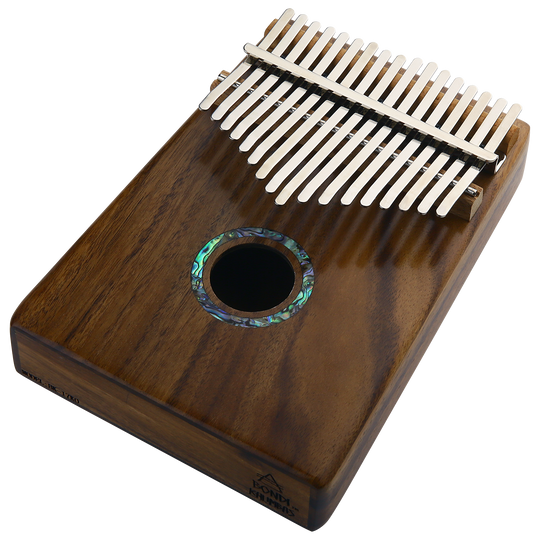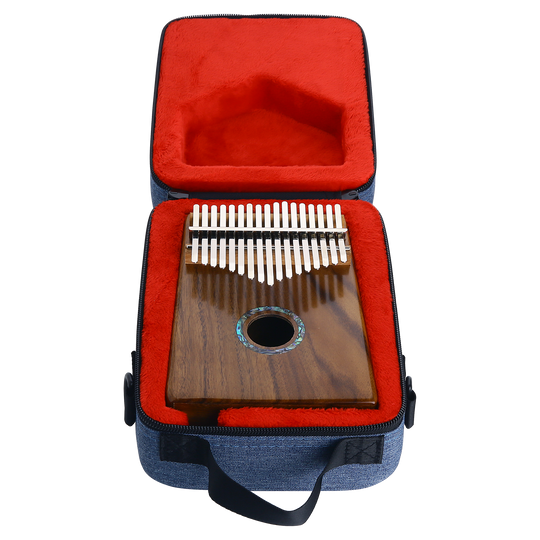How to Choose the Perfect Kalimba: A Guide for Beginners and Pros

Picking a ripper kalimba can be a bonza but a bit daunting, especially with the heaps of choices out there.
Kalimbas, or thumb pianos, have a beaut sound that's charmed musos and hobbyists alike.
Whether you're just starting or already a legend, getting the right kalimba is key to a top-notch playing experience.
What to know before buying a kalimba? This guide will help you suss out what to look for when choosing a ripper kalimba.
1. Understand the Basics of a Kalimba
Before diving into the specifics, it's essential to understand what a kalimba is and how it works. A kalimba typically consists of a wooden or acrylic body and metal tines (keys) that you pluck with your thumbs to produce sound. The size, material, and tuning of the kalimba can significantly impact the sound quality and playability.
2. Consider the Number of Keys
One of the first decisions you'll need to make is choosing the number of keys (tines) on your kalimba. Kalimbas commonly come with 10, 17, or 21 keys, though other variations exist.
- 10-Key Kalimbas: These are often recommended for beginners. They have fewer notes, making them easier to learn and play simple tunes. However, they may limit you if you want to play more complex music.
- 17-Key Kalimbas: This is the most popular option and strikes a good balance between simplicity and versatility. A 17-key kalimba allows you to play a wide range of songs, including more intricate melodies.
- 21-Key Kalimbas: These offer the most flexibility but can be more challenging for beginners due to the additional keys. They are ideal for advanced players looking to explore a broader range of music.

1Is 17 or 21 key kalimba better? It depends. When choosing the number of keys, consider your skill level and the type of music you want to play.
3. Material Matters
Which kalimba is better acrylic or wood? The material of the kalimba's body can significantly affect its sound and durability. The two primary materials used in kalimbas are wood and acrylic.
- Wooden Kalimbas: These are the most common and traditional type. Wooden bodies produce a warm, resonant tone that many players find appealing. Different types of wood can produce varying sound qualities. For example, mahogany is known for its rich, full sound, while koa wood offers a brighter tone.
- Acrylic Kalimbas: These are less common but have gained popularity for their unique sound and appearance. Acrylic kalimbas produce a clearer, more bell-like tone. They are also visually striking, often coming in transparent or colorful designs. However, they may not resonate as deeply as wooden kalimbas.
When choosing between wood and acrylic, think about the type of sound you prefer and whether you prioritize traditional aesthetics or a modern look.
4. Check the Tuning
Is it hard to tune a kalimba? Well, the tuning of a kalimba is another crucial factor to consider. Most kalimbas are tuned to the diatonic scale in the key of C, which is suitable for beginners and most popular songs.
However, some kalimbas are tuned to different keys, such as G, D, or E, or even to pentatonic or chromatic scales.
- Standard Tuning (C Major): Ideal for beginners and versatile enough for a wide range of music. If you're new to playing the kalimba, starting with a C-tuned kalimba is a safe bet.
- Alternative Tunings: If you have specific musical preferences or are looking for a different sound, consider kalimbas tuned to other keys or scales. These can offer unique tonal qualities but may be less versatile for beginners.
It’s also worth noting that kalimbas can be retuned if necessary, but this requires some skill and understanding of musical scales.

5. Evaluate the Build Quality
A good kalimba should be well-constructed, with attention to detail in its design and assembly. Here are some aspects to check:
- Tine Alignment: The tines should be evenly spaced and aligned with the sound hole (if present). Misaligned tines can affect playability and sound quality.
- Smooth Edges: The edges of the kalimba, particularly where your thumbs will be in contact, should be smooth and comfortable to touch. Sharp or rough edges can cause discomfort during extended playing sessions.
- Sturdy Construction: The kalimba should feel solid and durable. Avoid kalimbas that feel flimsy or poorly assembled, as these may not last long or produce good sound quality.
6. Sound Quality
Ultimately, the sound quality of the kalimba is one of the most critical factors in your decision. While sound is subjective and personal preference plays a significant role, here are some general tips:
- Resonance: A good kalimba should have a rich, resonant sound that lingers pleasantly after you pluck a key. Wooden kalimbas generally offer more resonance, while acrylic ones provide a clearer, more defined tone.
- Volume: Consider whether you want a kalimba with a louder or softer sound. Kalimbas with sound holes tend to produce a louder, fuller sound, while those without sound holes may be quieter but offer more nuanced tones.
- Tone: Listen to the kalimba's tone – it should be clear, consistent, and free of buzzing or unwanted noise. Each key should produce a distinct, pleasant note.
If possible, try to listen to audio samples or test the kalimba in person before purchasing.
7. Price vs. Value
Kalimbas come in a range of prices, from budget-friendly models to high-end instruments. While it can be tempting to go for the cheapest option, remember that quality often comes at a price. Consider the following:
- Budget Kalimbas: These can be a good starting point for beginners or those unsure if they’ll continue playing. However, they may lack the sound quality and durability of higher-end models.
- Mid-Range Kalimbas: These offer a good balance of quality and affordability. They’re usually well-constructed, produce good sound, and last longer.
- High-End Kalimbas: These are often handcrafted from premium materials and offer superior sound quality. They’re ideal for serious musicians or those who want the best possible playing experience.
Determine your budget and weigh the features that matter most to you against the price. Sometimes, spending a bit more upfront can lead to a more satisfying and long-lasting investment.
8. Additional Features
Some kalimbas come with additional features that can enhance your playing experience:
- Sound Holes: Kalimbas with sound holes tend to produce a louder, more resonant sound. However, some players prefer the more controlled sound of a solid-body kalimba without holes.
- Electrification: Some kalimbas come with built-in pickups, allowing you to amplify the sound through speakers or recording equipment. This can be a great feature for performers or those who want to record their music.
- Design and Aesthetics: While not crucial to sound quality, the design and appearance of the kalimba can be an important factor for many players. Choose a kalimba that appeals to your personal taste and makes you feel inspired to play.
9. Brand Reputation
Finally, consider the reputation of the brand you’re buying from. Established brands with positive reviews are more likely to produce high-quality instruments.
\Research customer reviews, watch video demos, and seek recommendations from other players to find reliable brands that offer good value for money.
Ready for a new Kalimba?
Choosing a top-notch kalimba is all about balancing what you’re into with the finer details like the number of keys, the materials, its tuning, and how sturdy it feels.
Whether you're just kicking off or ready for an upgrade, spending a bit of time to check out these factors will help you land a kalimba that suits you perfectly and adds heaps of joy to your musical journey.
Ready to find your perfect match?
Swing by Ukulelemate and check out our awesome Kalimba collection! Have a blast playing!
 Lifetime Warranty
Lifetime Warranty  60 Day Returns Policy
60 Day Returns Policy 1-2 Day Delivery
1-2 Day Delivery 































Leave a comment